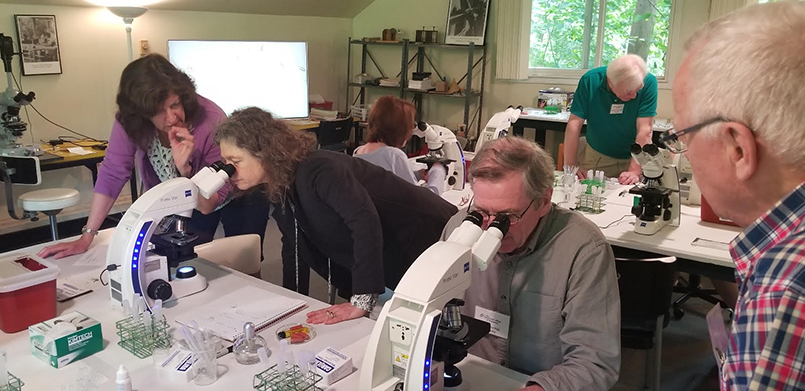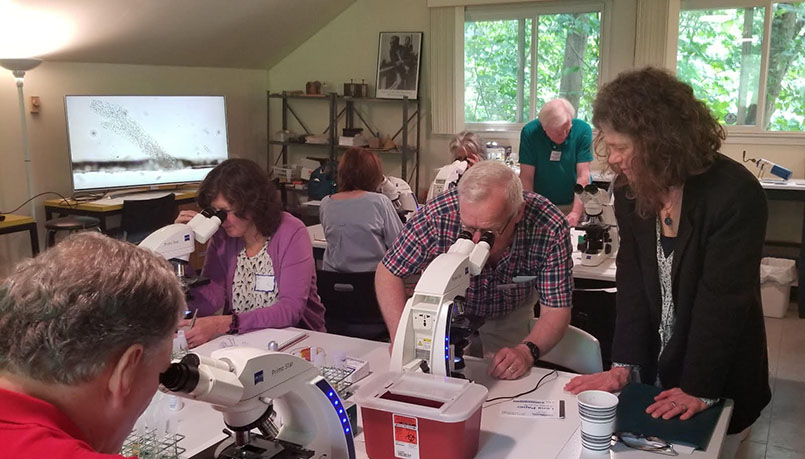Opportunities rarely occur for learning and experiencing the art of natural scientific observation. The American College of Orgonomy offered its Half-Day Laboratory Course on “Bions: The Elemental Particles of Life” at our campus in Princeton, NJ on Saturday, June 1, 2019. Our new half-day course with a focus on bions gave students a digestible portion of orgonomic knowledge on one of the subjects fundamental to all laboratory work in orgonomy.
Wilhelm Reich discovered bions in the 1930’s during his observations about the development of amoebas. He observed that plant material in grass infusions broke down into tiny luminating globules that moved about freely. Reich called them bions. Heaps of them in disintegrating grass look texturally similar to the protoplasm in protozoa. In fact, he discovered that bionous disintegration of grass and other material can spontaneously develop into protozoa. This was a bombshell in biology that had rejected the idea of spontaneous generation and adopted the dogma that every living cell must come from another cell.
Defined functionally rather than materially, a bion is a tiny blob of energy in a fluid filled sac surrounded by a membrane. They can result from any matter made to swell and break down in fluid: from sand, coal, iron, earth, and living tissue. They seem to be an intermediate stage between the living and the non-living.
In The Cancer Biopathy, Reich stated, “The bion is the elemental functioning unit of all living matter.” As such, bions represent the elemental particle of life from bios- life + -on elemental particle as in electron, proton, neutron, etc.
Reich later discovered some forms of bions that can be cultured. These have implications for medicine in the way they can paralyze and kill bacteria or cancer cells brought near them.
Rather than covering didactic material in lectures, the course focused primarily on direct observation and hands-on work, with the students receiving instruction on laboratory and microscope technique. Students made and observed various bion preparations, grass disintegration and protozoa, and paid particular attention to size, shape, color, movement (pulsation) and their own subjective impressions.
| 2019 Half-Day Lab Course Students and Faculty |
|
| Dr. Peter Crist discussing observations with students and faculty. |
|
 |
|
|
|
 |
